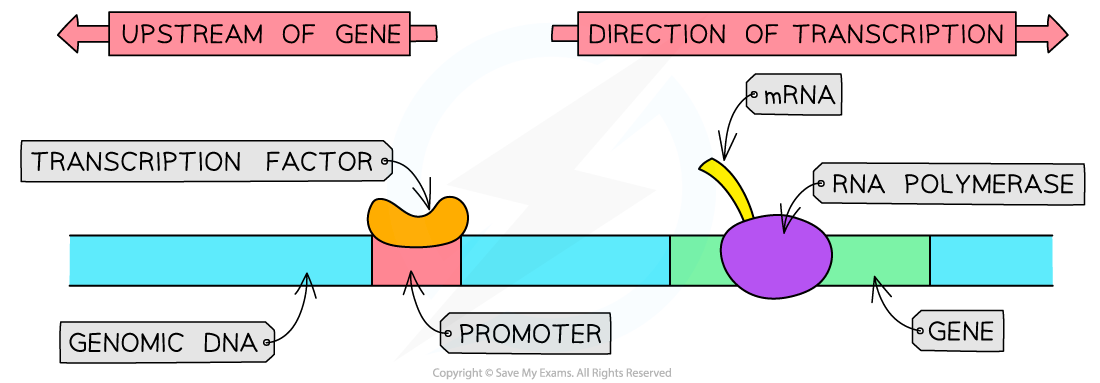Gene Control: Transcription Factors (Cambridge (CIE) A Level Biology): Revision Note
Exam code: 9700
Gene control: transcription factors
Prokaryotes use operons to control the expression of genes in cells
Eukaryotes also use transcription factors to control gene expression
A transcription factor is a protein that controls the transcription of genes by binding to a specific region of DNA
They ensure that genes are being expressed in the correct cells, at the correct time and to the right level
It is estimated that ~10% of human genes code for transcription factors
There are several types of transcription factors that have varying effects on gene expression
This is still a relatively young area of research and scientists are working hard to understand how all the different transcription factors function
Transcription factors allow organisms to respond to their environment
Some hormones achieve their effect via transcription factors
How transcription factors work
Some transcription factors bind to the promoter region of a gene
This binding can either allow or prevent the transcription of the gene from taking place
The presence of a transcription factor will either increase or decrease the rate of transcription of a gene
For example, PIF is a transcription factor found in plants that activates the transcription of the amylase gene

Gene control: gibberellin
Plant cells use transcription factors in a similar way to animal cells
Gibberellin is a hormone found in plants (e.g. wheat and barley) that controls seed germination by stimulating the synthesis of the enzyme amylase
It does this by influencing transcription of the amylase gene
When gibberellin is applied to a germinating seed there is an increased amount of the mRNA for amylase present
Mechanism for gene control by gibberellin
The breakdown of DELLA protein by gibberellin is necessary for the synthesis of amylase
The following components are involved:
Repressor protein DELLA
Transcription factor PIF
Promoter of amylase gene
Amylase gene
Gibberellin
Gibberellin receptor and enzyme
The process occurs as follows:
DELLA protein is bound to PIF, preventing it from binding to the promoter of the amylase gene so no transcription can occur
Gibberellin binds to a gibberellin receptor and enzyme which starts the breakdown of DELLA
PIF is no longer bound to DELLA protein and so it binds to the promoter of the amylase gene
Transcription of amylase gene begins
Amylase is produced

Examiner Tips and Tricks
In your exam you may be asked to explain why RNA analysis is important with regards to gene expression. From the outside most cells look almost identical with the same DNA in their nucleus. However we know that they are most likely expressing different genes.
When a cell expresses a gene, RNA is produced by transcription. This RNA present in a cell can be analysed. Scientists can match the RNA present in a cell to specific genes and work out which genes are being expressed in that specific cell.

Unlock more, it's free!
Did this page help you?